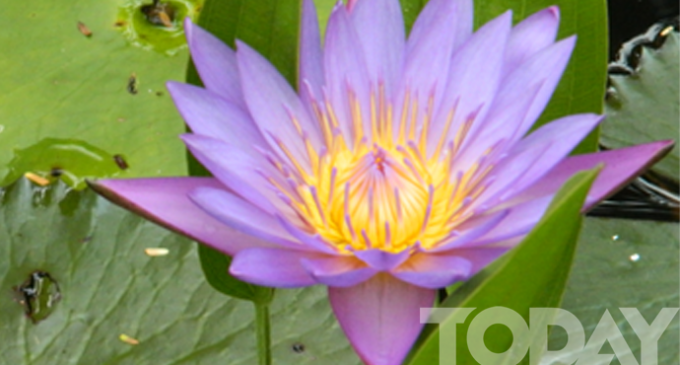Flora in Myanmar culture Lotus, the designated flower of the month “Thadingyut”

One of the most revered aquatic flowers around the world is Lotus [Nelumbo Neifera]. Though native to Southern Asia, it grows easily in water bodies in all countries except in extremely cold climate. Large round leaves, a network of meandering roots, fragrant blooms in various hues, and a broad rounded perforated seed pad, lotus thrives in muddy ponds and lakes with clear and clean water.
Myanmar literature records five kinds of lotus (1) White lotus [Nymphaea Alba], (2) Red Lotus [Nymphaea Rubra] (3) Blue Lotus [Nym-phaea Stellata], (4) Padoma Lotus [Nelumbrium Specisum] and (5) Kya Poun najei [Jxora Arborea]. Since all these five kinds bloom in Thadingyut [October] Lotus has been traditionally designated the flower of this month.
For ages, Lotus has played a significant role in arts, architecture, visual and performing arts and almost all religions. In motifs, designs and decorative arts of ancient Egypt, Babylonia, Greece, Rome, India, China, Korea, Japan and entire south-east Asia including Myanmar, every portion of Lotus from leaves to roots, blooms to seeds, are depicted or represented. In performing arts Lotus is praised, sung, mimed, and literary arts. Lotus enjoys pride of place in verse, prose and drama. In Myanmar traditional visual arts, “Kanote” or lotus drawing is one of the fundamentals to learn and practice. In eight different royal thrones Myanmar Kings sat upon, each for specific functions on specific occasions, Padoma Sana is the throne with carvings of Padoma Lotus blooms in its riches. Lotus was a favourite and auspicious motif in royal regalia and palace decoration.
In religion, particularly Hinduism and Buddhism Lotus holds a sacred position. In Hinduism Lotus flowers represent the Trinity of three Hindu goods – Vishnu, Shiva, and Brahma. In Hindu Temples, three lotus flowers stalks are depicted stemming out of the navel of a reclin-ing Mahadeva Vishnu – representing (1) Vishnu the creator (2) Shiva the Destroyer and (3) Brahma the Restorer. In Buddhism four Lotus blooms and one Lotus bud represent “Budda Kapa” or the Five Buddhas’ world namely (1) Kaukkusanda Buddha (2) Gonagamana Bud-dha (3) Kasapa Buddha (4) Gotama Buddha who already revealed and enlightened and (5) the up-coming Miteya Buddha represented by a Lotus bud.
Lotus flower is associated with many events in the life of Gotama Buddha. When a baby boy was born to Maha Maya, chief queen of King Sudhodana of Kapilavisthu kingdom the child miraculously walked seven steps, under each of which a Lotus bloom appeared. In another event, Ghatikara Brahma, a Hindu deity, offered Prince Siddartha [Bodhisatha] a set of lotus robes when the prince cut of his hair to become a forest recluse. That robe was woven with the fibrous threads of Lotus stalks.
Such robes are still woven in Myanmar. They are worn in cold weather and cool in summer. Lotus robes are offered to monks advanced in age. Lotus especially the white Lotus is the symbol of purity in Buddhism. Because of its Beauty and Longevity lotus has become simile and metaphors in Buddhist teachings and literature. In Mahayana Bud-dhism there is Lotus Sutta [Lotus Discourse].
Being a delicious, hygienic and nourishing vegetable, lotus is consumed as temple food in a variety of recipes and cooking, mostly in Mahayana Buddhist countries-China, Japan, Korea etc. Except its leaves, all other parts of Lotus are eaten raw, cooked or preserved. It is also a popular ingredient in herbal medicine.
Environmentalists are also fond of lotus which cleans the water in which it sits, while filtering carbon dioxide out of the air and converting it into clean oxygen.
Lets grow or let them grow in our aquatic surroundings.
./wp-content/uploads/2018/10/Emirate-Online-TDY.png)





















There are no comments at the moment, do you want to add one?
Write a comment